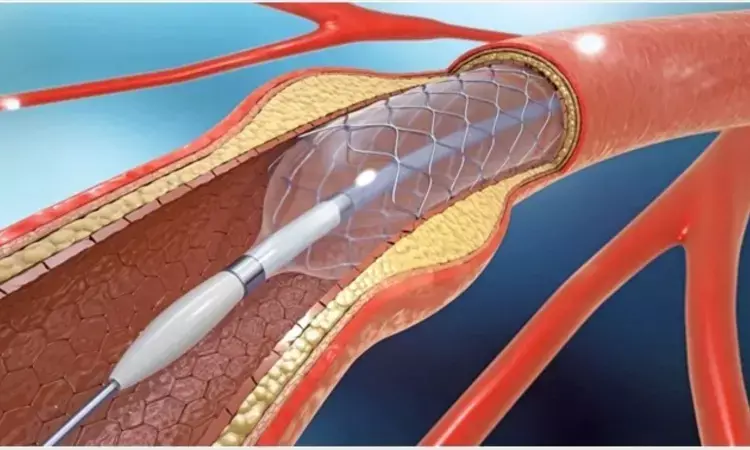- Home
- Medical news & Guidelines
- Anesthesiology
- Cardiology and CTVS
- Critical Care
- Dentistry
- Dermatology
- Diabetes and Endocrinology
- ENT
- Gastroenterology
- Medicine
- Nephrology
- Neurology
- Obstretics-Gynaecology
- Oncology
- Ophthalmology
- Orthopaedics
- Pediatrics-Neonatology
- Psychiatry
- Pulmonology
- Radiology
- Surgery
- Urology
- Laboratory Medicine
- Diet
- Nursing
- Paramedical
- Physiotherapy
- Health news
- Fact Check
- Bone Health Fact Check
- Brain Health Fact Check
- Cancer Related Fact Check
- Child Care Fact Check
- Dental and oral health fact check
- Diabetes and metabolic health fact check
- Diet and Nutrition Fact Check
- Eye and ENT Care Fact Check
- Fitness fact check
- Gut health fact check
- Heart health fact check
- Kidney health fact check
- Medical education fact check
- Men's health fact check
- Respiratory fact check
- Skin and hair care fact check
- Vaccine and Immunization fact check
- Women's health fact check
- AYUSH
- State News
- Andaman and Nicobar Islands
- Andhra Pradesh
- Arunachal Pradesh
- Assam
- Bihar
- Chandigarh
- Chattisgarh
- Dadra and Nagar Haveli
- Daman and Diu
- Delhi
- Goa
- Gujarat
- Haryana
- Himachal Pradesh
- Jammu & Kashmir
- Jharkhand
- Karnataka
- Kerala
- Ladakh
- Lakshadweep
- Madhya Pradesh
- Maharashtra
- Manipur
- Meghalaya
- Mizoram
- Nagaland
- Odisha
- Puducherry
- Punjab
- Rajasthan
- Sikkim
- Tamil Nadu
- Telangana
- Tripura
- Uttar Pradesh
- Uttrakhand
- West Bengal
- Medical Education
- Industry
Angioplasty with sirolimus-coated balloon Comparable to Thin-Struts DES among in-stent restenosis Patients at 2 Years: Study

Italy: Findings from contemporary registry data have revealed encouraging data for interventionists hoping that a new generation of coronary balloons may improve the treatment of in-stent restenosis (ISR).
In a propensity score-matched analysis of 335 pairs of patients with ISR lesions, the researchers found that angioplasty with a new-generation sirolimus-coated balloon (SCB) yielded comparable rates of target vessel revascularization, target lesion revascularization, all-cause death, myocardial infarction, and major adverse cardiovascular events at two years as compared to thin-struts drug-eluting stents (DESs).
The findings provide some information about the long-term safety and efficacy of sirolimus DCBs versus DES in real-world patients with DES-ISR, the researchers wrote in Circulation: Cardiovascular Interventions.
DCBs that release sirolimus are a relatively new invention that requires researchers to engineer an effective release of this antiproliferative drug, owing to its limited lipophilicity inherently blocking effective vessel wall penetration.
Evidence indicates that drug-coated balloons may be beneficial in treating in-stent restenosis (ISR). However, in this setting, the efficacy of new-generation SCB compared with the latest-generation drug-eluting stents has not been studied. Considering this, Bernardo Cortese from Milan, Italy, and colleagues aimed to evaluate the safety and efficacy of SCB versus thin-struts DES in ISR at long-term follow-up.
The study included all patients in the EASTBORNE (The All-Comers Sirolimus-Coated Balloon European Registry) and DEB-DRAGON (DEB vs Thin-DES in DES-ISR: Long Term Outcomes) registries undergoing percutaneous coronary intervention for DES-ISR.
The primary study endpoint was target lesion revascularization at 24 months. Secondary endpoints included all-cause death, major adverse cardiovascular events, myocardial infarction, and target vessel revascularization at 24 months.
The study led to the following findings:
- The pooled analysis included 1545 patients with 1679 ISR lesions, of whom 40.2% of patients with 621 lesions were treated with thin-strut DES, and 59.8% of patients with 1045 lesions were treated with SCB.
- The unmatched cohort showed no differences in the incidence of target lesion revascularization (10.8% versus 11.8%); however, there was a trend toward lower rates of myocardial infarction (7.4% versus 5.0%) and major adverse cardiovascular events (20.8% versus 17.1%) in the SCB group.
- After propensity score matching (n=335 patients per group), there were no significant differences in the rates of target lesion revascularization (11.6% versus 11.8%), target vessel revascularization (14.0% versus 13.1%), myocardial infarction (7.2% versus 4.5%), all-cause death (5.7% versus 4.2%), and major adverse cardiovascular event (21.5% versus 17.6%) between DES and SCB treatment.
The researchers, however, acknowledged the inherent limitations of a non-randomized analysis. Additionally, the two registries came from different centers that did not follow a uniform protocol for lesion preparation.
Reference:
Wańha W, et al "Long-term outcomes following sirolimus-coated balloon or drug-eluting stents for treatment of in-stent restenosis" Circ Cardiovasc Interv 2024; DOI: 10.1161/CIRCINTERVENTIONS.124.014064.
Dr Kamal Kant Kohli-MBBS, DTCD- a chest specialist with more than 30 years of practice and a flair for writing clinical articles, Dr Kamal Kant Kohli joined Medical Dialogues as a Chief Editor of Medical News. Besides writing articles, as an editor, he proofreads and verifies all the medical content published on Medical Dialogues including those coming from journals, studies,medical conferences,guidelines etc. Email: drkohli@medicaldialogues.in. Contact no. 011-43720751


